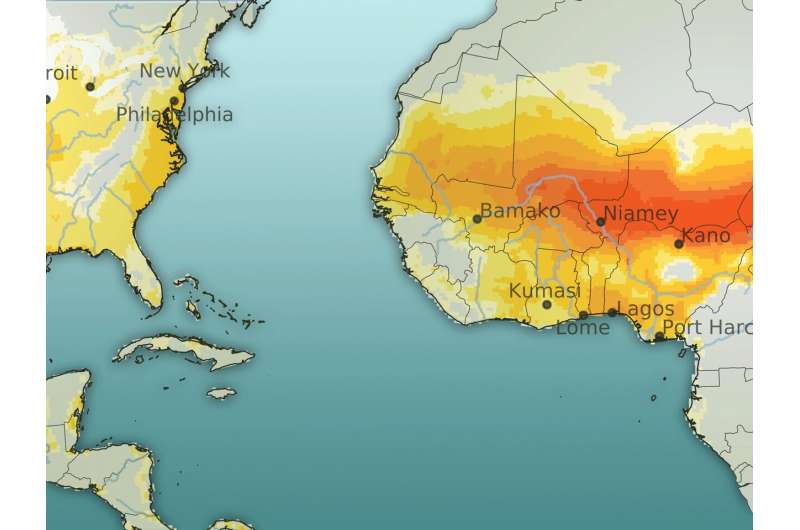
If global temperatures increase by 2°C above pre-industrial levels, the 2.2 billion residents of Pakistan and India’s Indus River Valley, the one billion people living in eastern China and the 800 million residents of sub-Saharan Africa will annually experience many hours of heat that surpass human tolerance.
If warming of the planet continues to 3°C above pre-industrial levels, the researchers concluded, heat and humidity levels that surpass human tolerance would begin to affect the Eastern Seaboard and the middle of the United States—from Florida to New York and from Houston to Chicago. South America and Australia would also experience extreme heat at that level of warming.
At current levels of heating, the researchers said, the United States will experience more heat waves, but these heat waves are not predicted to surpass human limits as often as in other regions of the world. Still, the researchers cautioned that these types of models often do not account for the worst, most unusual weather events.
“Models like these are good at predicting trends, but they do not predict specific events like the 2021 heat wave in Oregon that killed more than 700 people or London reaching 40°C last summer,” said lead author Daniel Vecellio, a bioclimatologist.
Researchers pointed to Al Hudaydah, Yemen, a port city of more than 700,000 people on the Red Sea. Results of the study indicated that if the planet warms by 4°C, this city can expect more than 300 days when temperatures exceed the limits of human tolerance every year, making it almost uninhabitable.
“As people get warmer, they sweat, and more blood is pumped to their skin so that they can maintain their core temperatures by losing heat to the environment,” said Kenney professor of physiology and kinesiology. “At certain levels of heat and humidity, these adjustments are no longer sufficient, and body core temperature begins to rise. This is not an immediate threat, but it does require some form of relief. If people do not find a way to cool down within hours, it can lead to heat exhaustion, heat stroke and strain on the cardiovascular system that can lead to heart attacks in vulnerable people.”